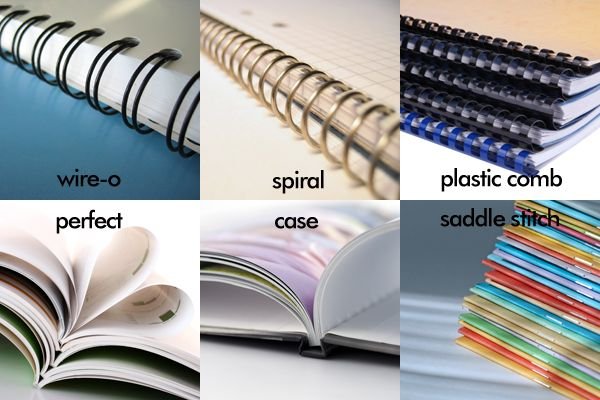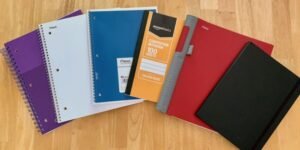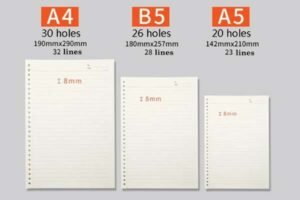
Are you wondering about notebook page counts? It seems simple, but it can be tricky. Getting it wrong means a notebook that's too bulky or runs out too fast. Let's clear this up.
Standard notebooks typically range from 80 to 250 pages, which is 40 to 125 sheets. Common counts include 96, 128, 160, or 192 pages. However, there's no single "correct" number; it varies widely.
The "right" number of pages really depends on what you'll use the notebook for. A small pocket notebook might only have 64 pages (32 sheets). A standard school composition book often has around 100-200 pages (50-100 sheets). A thick journal for daily writing could have 240 pages (120 sheets) or even more. It's all about matching the page count to its purpose to make sure it's useful and easy to carry if needed.
For example, when I was looking for a journal for my daily thoughts, I needed something substantial. A thin notebook just wouldn't last. But for quick notes on the go, a slim, lightweight notebook with fewer pages is perfect. We see this all the time with client requests – a corporate client might want a sleek 80-page notebook for a conference, while a student group needs a sturdy 200-page option for a semester's worth of notes.
What Factors Determine the Number of Pages in a Notebook?
So, what actually decides how many pages go into a notebook? It’s not just a random number. Several key things come into play.
The primary factors determining a notebook's page count1 are its intended use, the binding method2, paper thickness (GSM)3, user preference for portability versus capacity, and overall production cost. These elements are balanced to create a functional and economical product.
Unpacking the Factors
Let's break down these factors a bit more. Each one plays a crucial role.
Intended Use
This is probably the biggest decider.
- Daily Journaling: Often needs more pages to last several months or a year. Think 160-240 pages.
- Meeting Notes: Medium page count, maybe 80-120 pages, to be portable but still hold enough information.
- Academic/Study Notes: Can vary. A single subject notebook might be 100 pages, while a multi-subject could be 200+. Our client Sarah Müller, for example, needed campus notebooks with specific page counts for different subjects.
- Sketching/Art: Depends on paper thickness. Thicker paper means fewer pages for the same bulk.
- Travel Journal: Usually fewer pages, 60-100, to keep it light and easy to pack.
Binding Method
How the notebook is held together significantly impacts how many pages it can comfortably hold.
- Stitched/Sewn Binding: Great for durability and can lay flat. Often found in notebooks up to 192 or 240 pages. Our German chain bookstore client loved the lay-flat design we achieved with bare spine binding for their 120,000+ plant atlas notebooks.
- Spiral/Wire-O Binding: Can accommodate a large number of pages and allows the notebook to fold back on itself.
- Perfect Binding (Glue): Common for softcover books and some journals. The page count can be quite high, but very thick books might be less durable or harder to lay flat unless done well. This was a challenge for Yuki Nakamura, who needed an ultra-thin weekly planner with over 200 pages; we had to find a special glue binding solution.
- Ring Binders (e.g., 6-hole A5): The beauty here is flexibility. The binder mechanism determines capacity, but you can add or remove pages as needed. Our metal binders are compatible with international standards like Filofax and Campus.
Paper Thickness (GSM)
Paper is measured in Grams per Square Meter (GSM).
- Thinner Paper (e.g., 60-80gsm): More pages can fit into a slimmer notebook. Common for composition books or high-page-count Bibles.
- Standard Paper (e.g., 80-100gsm): A good balance of quality and page count. We often use 80gsm as a base and offer upgrades to 100gsm for a more premium feel.
- Thicker Paper (e.g., 120gsm+): Used for art, sketching, or high-end journals where ink bleed-through is a concern. This will naturally reduce the number of pages for a given spine thickness.
User Preference and Portability
Some people want a notebook they can easily slip into a pocket or small bag. Others want a substantial desk journal.
- Portability: Fewer pages, lighter paper.
- Capacity/Longevity: More pages, potentially heavier paper.
Production Cost
Simply put, more pages mean more raw material (paper) and potentially more complex binding processes. This increases the cost.
- Our regular notebooks cost between $0.84 and $1.70 USD for orders over 1,000. If you increase page count or paper weight, this will shift. For instance, upgrading from 80gsm to 100gsm adds about $0.07 per book.
Here’s a quick table summarizing the impact:
| Factor | Influence on Page Count | Example |
|---|---|---|
| Intended Use | High (determines need for capacity) | Daily journal (more pages) vs. travel (fewer) |
| Binding | High (limits or enables page capacity) | Spiral (many pages) vs. thin staple (few) |
| Paper GSM | Medium (thicker paper = fewer pages for same bulk) | 120gsm art paper vs. 70gsm note paper |
| Portability | Medium (desire for lightness restricts pages) | Pocket notebook vs. desk ledger |
| Cost | Medium (more pages = higher material cost) | Budget notebooks vs. premium journals |
How Does Binding Type Affect Notebook Page Count?

We touched on binding, but let's look closer. The binding method is a huge deal for how many pages a notebook can realistically hold.
Binding directly controls a notebook's maximum page capacity and usability. Spiral and ring binders generally allow for more pages and lay-flat convenience, while stitched or glued methods might have practical limits to maintain durability and a slim profile.
Binding and Capacity
Different bindings have different strengths when it comes to page count.
Stitched or Sewn Binding
This is a classic. Sections of pages (signatures) are sewn together, and then the cover is attached.
- Pros: Very durable, can lay relatively flat (especially with "exposed spine" or "lay-flat" sewing). Our German client's plant atlas notebooks used a bare spine binding to achieve a perfect 180° flat design.
- Page Count: Good for notebooks from 64 pages up to around 240 pages. Beyond that, the spine can get quite thick.
- Our Capability: We do a lot of sewing glue binding.
Spiral Binding (Wire-O or Coil)
A continuous wire or individual loops pass through holes punched along the spine.
- Pros: Lays perfectly flat, can fold back 360 degrees. Can hold a lot of pages.
- Page Count: Easily handles 200-300 pages or more, depending on the spiral diameter.
- Our Capability: We excel here, especially with our patented "seamless coil" technology for a smooth touch.
Metal Ring Binders (Refillable Systems)
Think Filofax or our NotebookRing® binders. A metal mechanism with rings opens and closes.
- Pros: Infinitely customizable page count (up to the ring capacity). You can add, remove, and rearrange pages.
- Page Count: Determined by the ring diameter (e.g., 15mm, 20mm, 25mm, 30mm). A 25mm ring can hold around 150-200 sheets of standard paper.
- Our Capability: We manufacture metal binders that fit international standards (6-hole, 20-hole, 26-hole) and can be customized with laser engraving, like for James Wong's corporate gifts.
Perfect Binding (Glued Spine)
Pages are glued together at the spine, like a paperback book.
- Pros: Can look very sleek and professional. Cost-effective for large runs.
- Page Count: Can handle a wide range, from thin booklets to thick books. However, for thin notebooks with many pages, it can be tricky to ensure they lay flat or are durable. Yuki Nakamura's ultra-thin weekly planner (≤8mm thick with 200+ pages) was a challenge we solved with a specialized glue binding technique.
- Our Capability: We use German Heidelberg glue binders for strong, flexible adhesion.
Saddle Stitching (Stapled)
Pages are folded and stapled through the centerfold.
- Pros: Simple, inexpensive. Good for thin booklets.
- Page Count: Best for notebooks up to about 64-80 pages. More than that, and the inner pages start to "creep" out.
Choosing the right binding is key to getting the page count you want in a notebook that functions well.
Does Paper Thickness Influence How Many Pages a Notebook Can Have?

Absolutely, paper thickness is a big player. It might seem like a small detail, but it adds up quickly.
Yes, thicker paper (higher GSM) significantly reduces the number of pages that can fit into a practical notebook spine width. This impacts the notebook's overall bulk, weight, and how it feels to use, making paper choice crucial for page count decisions.
Paper Weight (GSM) and Its Impact
Let's get into the specifics of paper weight.
Understanding GSM
GSM stands for "Grams per Square Meter." It's a standard measure of paper density. Higher GSM means heavier, thicker paper.
- Low GSM (e.g., 50-70gsm): Thin, lightweight. You can fit many pages without much bulk. Think newsprint or some mass-market paperbacks or Bibles.
- Medium GSM (e.g., 80-100gsm): This is a common range for everyday notebooks. It offers a good balance. Our standard notebooks often start at 80gsm, with an option to upgrade to 100gsm for about $0.07 extra per book. This provides a more substantial feel and reduces ink bleed-through.
- High GSM (e.g., 120gsm and above): Thicker, more opaque, and often more durable. Used for art paper, high-quality journals, or covers. European sketch paper or Japanese Tomoe River paper (which is uniquely thin yet fountain pen friendly) are special cases.
How GSM Affects Overall Notebook Thickness
Imagine you want a notebook that's 1 cm thick.
- With 70gsm paper, you might fit 100 sheets (200 pages).
- With 100gsm paper, you might only fit 70 sheets (140 pages).
- With 120gsm paper, it could be closer to 55-60 sheets (110-120 pages).
(These are illustrative numbers, actuals depend on paper calendering and compression in binding).
This is why, when a client wants a very fountain-pen-friendly paper (which is often thicker or coated), we have to discuss how it will affect the page count if they also want a slim notebook.
Balancing Page Count with Paper Quality
| Paper Weight | Typical Use | Page Count Impact (for same notebook thickness) | Feel |
|---|---|---|---|
| 60-70 GSM | Mass-market books, tear-off pads | Highest | Thin, can feel flimsy, potential bleed |
| 80-90 GSM | Standard notebooks, planners | High | Good balance, fairly smooth |
| 100 GSM | Quality notebooks, journals | Medium-High | Substantial, smoother, less bleed |
| 120 GSM+ | Sketchbooks, premium journals | Medium-Low | Thick, robust, often textured |
We always work with clients to find the sweet spot. For instance, if they want 100gsm paper and a 192-page count, the notebook will naturally be thicker than if they chose 80gsm paper. It's about managing expectations and delivering a product that meets their needs in terms of both feel and function. We also offer recycled paper options at no surcharge, which often has a slightly different texture and bulk.
How Do I Choose the Right Number of Pages for My Custom Notebook?

Okay, so you're planning a custom notebook. How do you pick that magic number of pages? It’s about being intentional.
To choose the right page count for a custom notebook, clearly define its purpose, understand the end-user's needs, consider portability requirements, desired longevity, and your budget. Discussing these with your manufacturer ensures an optimal outcome.
Guiding Your Custom Choice
Here’s how I usually walk my clients through this decision:
What's the Main Goal?
- Short-term project or event? Fewer pages (e.g., 50-80 pages) might be perfect. Like the 50-page notebooks we do for educational institutions.
- Daily use for a year? You'll need more (e.g., 192-360 pages).
- A specific campaign or gift? The perceived value versus portability matters. For the Silicon Valley tech company, their employee onboarding gift box included a weekly planner with a moderate page count, balancing utility with a premium feel.
Who Is It For?
- Students: Might need durable notebooks with enough pages for a semester. Tear-proof reinforcement binding can be key. Sarah Müller's request for campus notebooks for a German chain bookstore required different page counts for various subjects, plus EU eco-labels.
- Professionals: Could prefer something a bit sleeker, maybe 100-160 pages. James Wong, founder of a corporate gift company, needed metal binder sets that felt premium but weren't overly bulky.
- Creatives/Designers: Paper type might be more critical than page count, but they still need enough space. Yuki Nakamura, a Japanese designer brand manager, was focused on an ultra-thin profile for a weekly planner, which dictated careful consideration of page count and binding.
How Portable Does It Need to Be?
- Pocket-sized A6 or Passport: Fewer pages to keep it slim (e.g., 64-128 pages).
- Desk Journal A4/B5: Can afford to be thicker and have more pages (e.g., 200+ pages).
What's Your Budget?
More pages mean more paper and potentially higher binding costs.
- We offer regular notebooks between $0.84-$1.70 for 1,000+ units, and $0.63-$1.30 for 10,000+ units. Page count is a factor here.
- If budget is tight, you might opt for a slightly lower page count or a more standard paper weight.
What Accessories or Special Features?
- If it's going into a binder system, the page count is less critical for the initial notebook as refills can be added.
- Special features like pre-cut dotted lines (like for the Japanese stationery brand's washi tape notebook) don't directly impact page count but are part of the overall design consideration.
I find that asking these questions helps narrow down the options. For example, [Placeholder for a personal story: I once worked with a startup that wanted a very impressive, thick notebook for investors. We went with 240 pages of 100gsm paper, which felt really substantial. But for their team's internal brainstorming, we did 80-page spiral bounds for ease of use.]
Why Choose NotebookRing® for Your Custom Notebooks?
Thinking about creating your own line of notebooks? Or maybe you need branded notebooks for your company or event? Finding the right manufacturing partner is crucial, especially when you're trying to get details like page count, paper type, and binding just right.
Since 2006, we at NotebookRing® have been focused on one thing: crafting ingenious writing tools. We’re not just another factory; we are specialists in paper stationery. Our 15,000㎡ FSC-certified factory is equipped with 8 full-process production lines, including top-notch German and Japanese machinery. This means we handle everything from raw material to finished product.
Deep Customization and Expertise
Page count is just one piece of the puzzle. We offer:
- Cover Customization: Hot stamping, laser engraving, embossing, cloth hardcover, and even eco-friendly options like bagasse fiber covers.
- Inner Page Selection: 80-120g acid-free paper, recycled paper, Japanese Tomoe River paper, European sketch paper. Formats include lines, grids, dots, blank – and we can print page numbers or do corner rounding.
- Binding Versatility: Sewing glue binding, metal coil (including our patented "seamless coil"), and binder replacement systems compatible with Filofax, Campus, and other international standards.
Many clients, like Sarah Müller from Germany, come to us with specific needs (FSC-certified, bilingual printing) that other suppliers struggle with. We can deliver.
Quality Control and Compliance
We don't compromise on quality. Our 4-level quality inspection includes paper weight tests, binding strength verification (≥500 page turns!), metal parts salt spray tests, and finished product drop tests (ISTA 3A standard). Plus, we’re ISO 9001, FSC™, and BSCI certified, and meet REACH/SVHC standards.
Solutions for Diverse Needs
Whether you're a large chain bookstore needing 120,000+ notebooks annually, a tech company like our Silicon Valley client looking for cost-effective (they saved 32%!) onboarding gifts, or a niche Japanese brand developing a top-selling specialty notebook, we have the experience. We understand the pain points, like James Wong needing a reliable supplier for smaller batch orders (300 sets/month) of custom metal binders.
Flexible and Committed to Sustainability
We support sample orders of 100 books (basic version) and batch production from 500 books. And we're committed to the environment: we donate 1 sapling for every 100 books sold and calculate our carbon footprint through Carbon Trust.
If you are looking for a partner who understands the nuances of notebook manufacturing, from page count to paper chemistry, we would love to talk.
Conclusion: Finding Your Perfect Page Count
So, there's no single answer to "how many pages are in a notebook." It depends on its purpose, materials, and binding. Choosing wisely ensures the notebook is a joy to use. At NotebookRing®, we help you craft the perfect notebook every time.
-
Understanding the factors that influence a notebook's page count can help you choose the right one for your needs. ↩
-
Exploring how different binding methods impact page count can guide you in selecting a durable and functional notebook. ↩
-
Learning about paper thickness and its effect on page count can help you make informed choices for your writing needs. ↩





